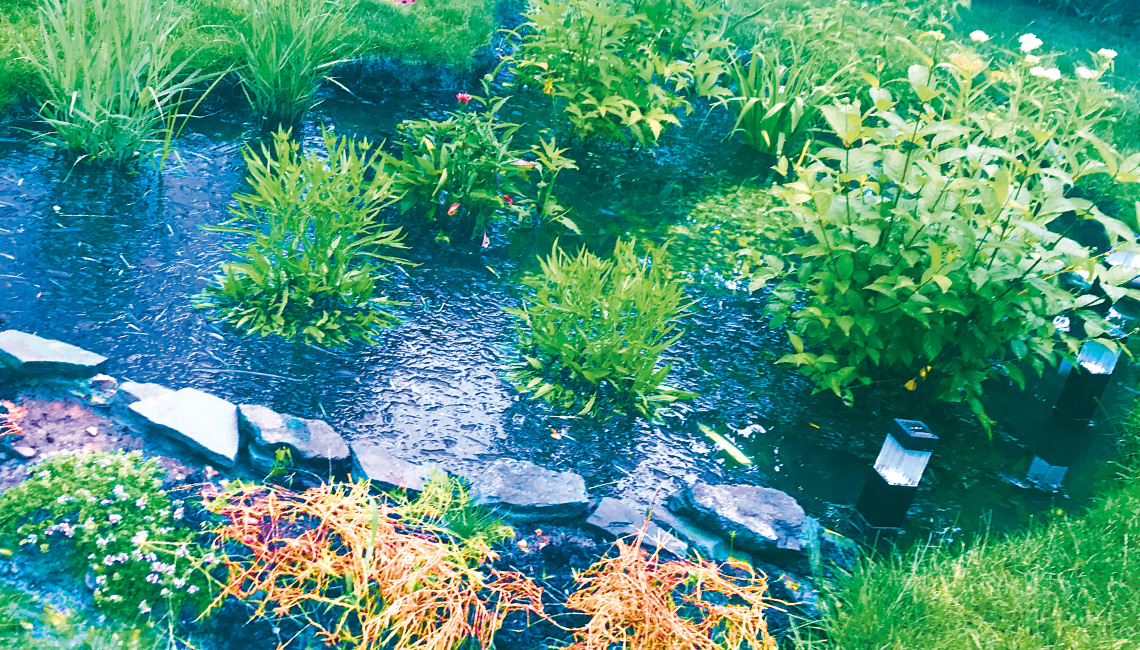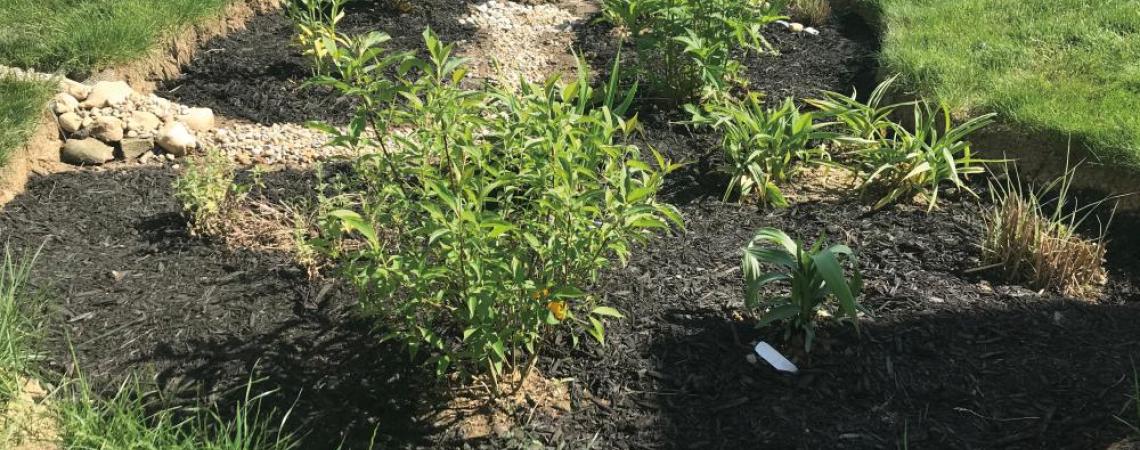In April of 2020, we were just beginning to wrap our heads around the notion that the coronavirus pandemic would not simply disappear after the weather turned warm. We began to accept that, for a while at least, our days would mostly be spent within the walls of our home and the boundaries of our neighborhoods. Schools were shuttered, office workers were learning to Zoom, and spring travel plans shifted to staycations.
Suddenly, everyone was developing a hobby: baking sourdough bread, knitting sweaters, learning to speak French, or playing the piano. Animal shelters were overrun with requests for dogs.
My family dug a hole in the ground and let it fill with water.
Designed to temporarily capture and slow the flow of water off your property, rain gardens are a practical and beautiful landscape feature that is becoming popular, especially for those looking to lighten their footprint on the Earth.
If that seems like a modest aspiration, understand that I’ve coveted a rain garden for many years. Designed to temporarily capture and slow the flow of water off your property, rain gardens are a practical and beautiful landscape feature that is becoming popular, especially for those looking to lighten their footprint on the Earth.
It’s a given that in a rainy environment like Ohio’s, we can’t let water simply pool wherever it wants. Because most of our homes have subterranean foundations, we need to keep rainwater away from the house if we want to keep our basements dry and protect our foundations. So, in keeping with building codes, homebuilders install drainage tile and sump pumps to keep the water routed toward a stormwater collection system, which could be a storm sewer in an urban area or a drainage ditch out in the country.
This approach works (usually), but the long-term effects of our collective rush to drain can be hard on rivers and creeks and the aquatic critters that live therein. Storm water management systems can cause rivers to be “flashy” — meaning the water rises and falls quickly, scouring that river-bottom habitat, causing erosion, and leading to flooding downstream. Storm drainage systems also carry sediment and trash from city streets, grease and oil from cars, and fertilizers and pesticides from yards and fields.
Rain gardens are shallow depressions in the ground that collect rainwater and allow it to slowly percolate into the soil instead of rushing off into the street. These features filter stormwater and prevent flooding as well as providing habitat for birds and butterflies and natural beauty that lasts throughout the year.
After a consultation with our local soil and water conservation district, we staked out a section of yard on the side of the house near two downspouts and began to dig. This led to plenty of curious questions from passing neighbors out walking (6 feet apart at the time, of course). Spurious speculation about our efforts included a small swimming pool, a large bird bath, even one suggestion of a hole to bury a body. We smiled grimly at their jokes and kept digging, by hand, until one more-helpful neighbor let us know that Home Depot rents excavating equipment and offered his truck to help fetch an earth-mover.
This was a game-changer, and in one day we had the rough outlines of the garden in place. After several bags of soil amendments and placement of carefully selected plantings, we routed the water from the downspouts into the rain garden.
Early on, I’ll admit, it looked like a muddy hole in the ground with a few scrawny shrubs. But later in the season, and especially by the next season, we were delighted by how lovely it looked, with wetland vegetation like buttonbush and queen of the prairie jostling for sunlight with black-eyed Susans and swamp milkweed.
There are many resources available to help homeowners plan, build, and maintain a rain garden. The Central Ohio Rain Garden Initiative has a complete building guide and a list of suitable native plants. The Toledo-Lucas County Rain Garden Initiative also has a step-by-step guide. But first check in with your local soil and water conservation district, as some offer classes and advice. Because rain gardens help relieve stress on municipal storm drainage systems, some communities even have cost-share programs that reimburse homeowners for plants, mulch, compost, and other rain garden materials.
A final thought: We surrounded our garden with solar-powered lights, both to add nocturnal beauty and to keep our guests from toppling into the garden while leaving one of our backyard parties. It’s kind of hard to miss, with its shrubbery and tall grasses, but your family and friends will thank you.
A few things to keep in mind
- Consider the size but be flexible. There’s a formula for measuring how large your rain garden needs to be, based on the size of your roof and other factors. We didn’t have quite enough room, but our smaller rain garden captures the water from most rain events. In serious downpours, the garden overflows into a swale and into the storm sewer. If you want, you can add a downstream drain and route the overflow directly into the storm sewer.
- Be realistic about what you can do by hand. In my neighborhood, at least, it doesn’t take long to get past the topsoil and into clay, which doesn’t come up easily. The rented excavator cost a bit but was worth every cent.
- Follow the directions to test the drainage. Dig a hole, fill it with water, and see how much it drains in 24 hours. That’s how deep you want your rain garden to be, and that’s important because the water needs to disappear within 24 hours of the rain event. Otherwise, you’re making a place for mosquitos to breed, and nobody wants that.
- Accept that your neighbors may look at you strangely at first, but will be impressed when the plants begin to grow and blossom.










